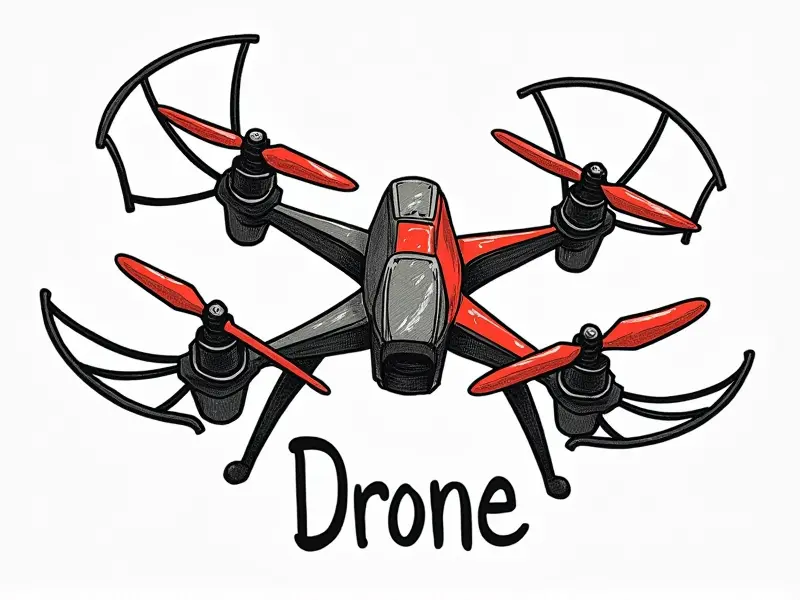How to power a homemade drone?

Essential Guide to Drone Power Management
Power management is crucial when building a homemade drone. Efficient power usage ensures longer flight times, better performance, and overall reliability. This guide will walk you through the key aspects of managing your drone's power requirements.
Maximize Flight Time with Right Power
- Battery Capacity: Choose batteries with high capacity to extend flight duration.
- Voltage Selection: Opt for the right voltage to balance performance and battery life.
- Efficient Motors: Use energy-efficient motors to reduce power consumption without sacrificing speed.
Choosing Batteries for Your Drone
The type of battery you select can significantly impact your drone's performance. Lithium Polymer (LiPo) batteries are popular due to their high energy density and lightweight nature. Here’s how to choose the right one:
- Voltage: Match the voltage with your ESCs and motors.
- C-Value: The discharge rate of a battery is crucial for peak performance under load.
- Battery Cells: More cells mean higher capacity but also greater weight.
DIY Drone: Power and Performance
Building a drone from scratch allows you to customize every aspect, including power management. Here are some tips for optimizing your DIY setup:
- Battery Management System (BMS): Implement a BMS to monitor battery health.
- Weight Reduction: Minimize weight by choosing lightweight materials and efficient components.
- Power Distribution: Ensure even distribution of power across all motors.
Optimal Power for Homemade Drones
To achieve optimal performance, you need to fine-tune the power supply. This includes selecting the correct voltage and balancing the load on each motor. Here’s how to do it:
- Voltage Regulation: Use a BEC (Battery Eliminator Circuit) for stable voltage.
- Balancing Load: Distribute power evenly among motors to avoid overheating or underperformance.
- Testing and Calibration: Regularly test your drone’s performance and make necessary adjustments.
Lightweight Power Options for Drones
Reducing weight is essential in maximizing flight time. Here are some lightweight power solutions:
- Lithium-Ion Batteries: Lighter than LiPo but with similar energy density.
- Solar Panels: Integrate small solar panels for supplementary power during long flights.
- Nickel Metal Hydride (NiMH) Batteries: Lower capacity but more durable and lighter.
Boost Drone Performance with Advanced Power Tech
Incorporating advanced technology can enhance your drone’s performance. Consider these options:
- Battery Management Systems (BMS): Monitor battery health, prevent overcharging and discharging.
- Regenerative Braking: Recycle energy during descent to extend flight time.
- Fuel Cells: For high-end drones requiring extended flight times.
Crafting an Optimal Drone Power Supply
To craft the perfect power supply for your drone, follow these steps:
- Select Proper Batteries: Based on voltage and capacity needs.
- Incorporate BMS: For monitoring battery health and safety.
- Distribute Power Evenly: Ensure all motors receive adequate power.
Simplified Guide to Drone Power Supplies
A simplified approach to managing your drone’s power supply includes the following steps:
- Battery Selection: Choose batteries with high capacity and appropriate voltage.
- Voltage Regulation: Use BECs or ESCs for stable voltage distribution.
- BMS Integration: Monitor battery health to prevent issues.
Selecting Motors for Drone Efficiency
The right motors can greatly improve your drone’s efficiency. Here are some considerations:
- KV Rating: Higher KV rating means faster but less efficient motors.
- Battery Compatibility: Ensure the motor voltage matches your battery.
- Mechanical Efficiency: Opt for motors with lower resistance and higher torque.
Essential Guide to Drone Power Systems
A comprehensive guide to setting up a power system for your drone includes the following elements:
- Battery Selection: High capacity, high voltage batteries like LiPo.
- Voltage Regulation: Use BECs or ESCs for stable power delivery.
- Power Distribution: Ensure even distribution to all motors.
Conclusion
Properly managing your drone’s power supply is essential for optimal performance and extended flight times. By selecting the right batteries, incorporating advanced technology, and carefully balancing load distribution, you can build a high-performing homemade drone that meets your needs perfectly.

